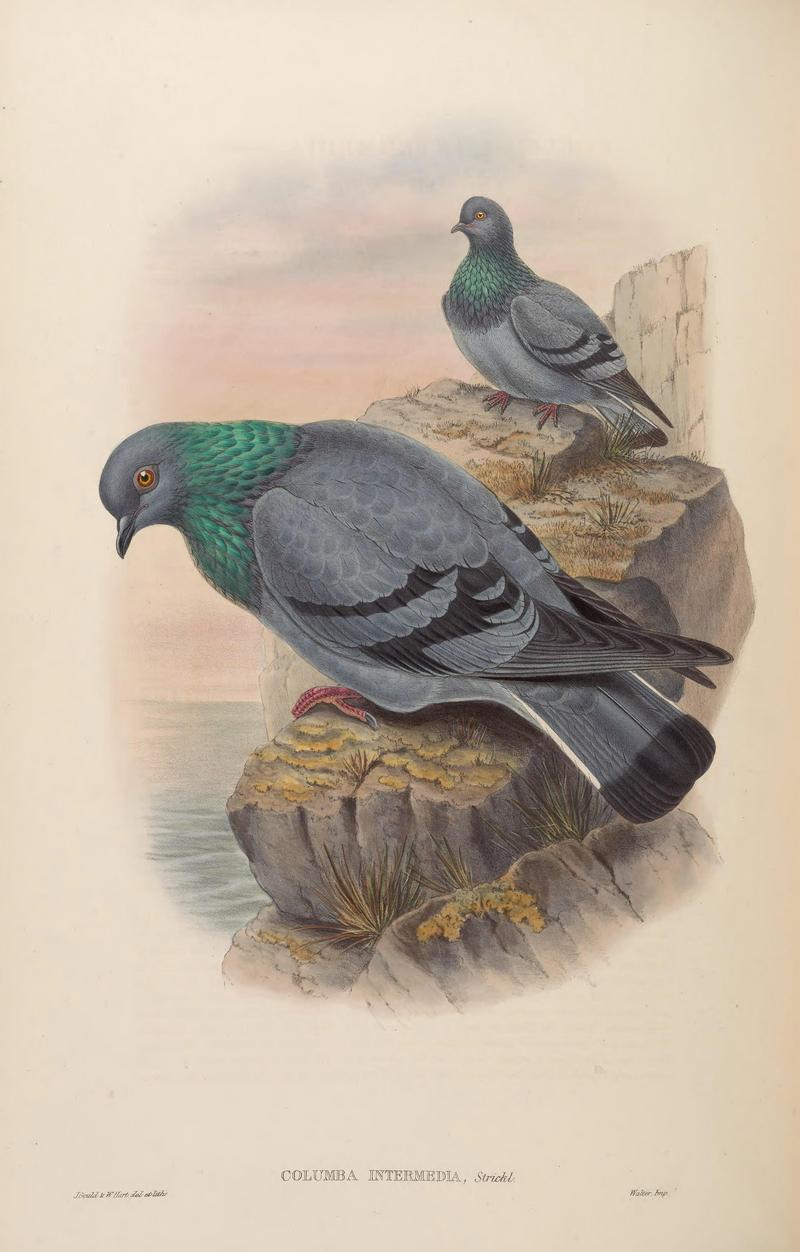|
| Query: birds | Result: 5205th of 32675 | |
rock dove, rock pigeon (Columba livia)
| Subject: | rock dove, rock pigeon (Columba livia)
| | Poster: | Wiki Photos (---@---.---)
| |

| Resolution: 4465x6990
File Size: 2688662 Bytes
Upload Date: 2017:02:21 14:37:31
|
Description
Columba intermedia = Columba livia intermedia
Date between 1850 and 1883
Source Gould, John, 1804-1881; Sharpe, Richard Bowdler, 1847-1909: Birds of Asia., Volume 6, London, http://archive.org/stream/BirdsAsiaJohnGoVIGoul#page/56/mode/2up
Author John Gould (1804–1881) https://en.wikipedia.org/wiki/John_Gould & Henry Constantine Richter (1821–1902) https://en.wikipedia.org/wiki/Henry_Constantine_Richter
Source: https://commons.wikimedia.org/wiki/File:BirdsAsiaJohnGoVIGoul_0232.jpg
The rock dove or rock pigeon (Columba livia) is a member of the bird family Columbidae (doves and pigeons). In common usage, this bird is often simply referred to as the "pigeon". The species includes the domestic pigeon, including the fancy pigeon. Escaped domestic pigeons have raised the populations of feral pigeons around the world. Order: Columbiformes, Family: Columbidae, Genus: Columba, Species: Columba livia Gmelin, 1789.
|
Comments |
|---|
| | Guest |
|
Scientific Name: Columba livia Gmelin, 1789
Common Names:
English – Rock Dove, Common Pigeon, Rock Dove
French – Pigeon Biset
Spanish – Paloma doméstica |
^o^
Animal Pictures Archive for smart phones
^o^
|
|
|